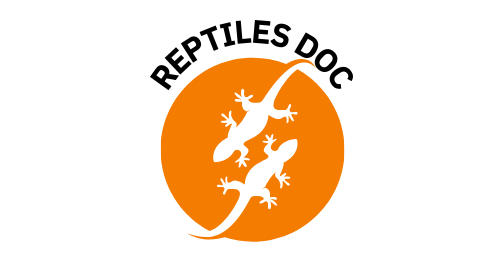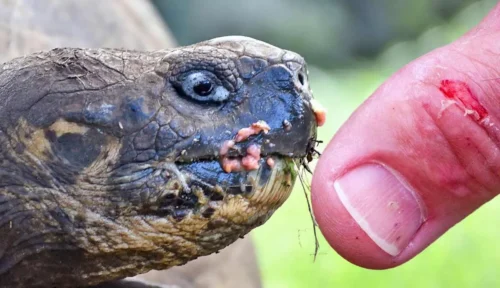Tortoises do not have teeth. Instead, they possess a sharp, beak-like structure made of keratin, the same material that makes up human fingernails and hair. do tortoise have teeth? This beak functions similarly to teeth but is more suited to their herbivorous diet.
Tortoises do not have teeth. Instead, they have sharp, beak-like mouths made of keratin that allow them to bite and chew their food. Their beaks are strong enough to crush and cut through tough vegetation, which makes up the bulk of their diet. The absence of teeth in tortoises is an adaptation to their feeding habits. Their beaks are strong and durable, allowing them to bite, tear, and chew various types of vegetation, such as grasses, leaves, and fruits.
The edges of the beak are often serrated, helping them to grip and cut through tough plant material effectively.Young tortoises, when hatching, have a small, sharp structure called an “egg tooth,” which is not a true tooth but a temporary tool they use to break through their eggshell. This egg tooth falls off soon after they hatch.
Do Tortoise Have Teeth
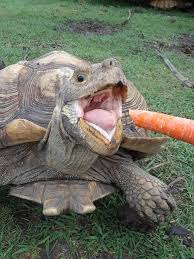
Tortoises, unlike mammals, do not have teeth. Instead, they have a specialized structure called a beak, similar to that of birds, which is used to grasp and cut food. Tortoises are fascinating reptiles, known for their longevity, slow movements, and distinctive shells. They are herbivores, primarily feeding on grasses, leaves, fruits, and vegetables. The structure of their mouth is uniquely adapted to their diet, allowing them to efficiently process food without the need for teeth.
Structure and Function of the Tortoise’s Mouth
Tortoises have a sharp, keratinized beak that serves the same purpose as teeth in other animals. This beak is made of the same material as human fingernails and is quite effective for their dietary needs. The beak has a sharp edge that allows the tortoise to cut through tough plant material. The upper and lower parts of the beak meet with precision, enabling the tortoise to grasp, tear, and chew food.
Feeding Process
When feeding, a tortoise uses its beak to bite off chunks of food, which are then swallowed whole or after minimal chewing. The lack of teeth does not hinder their ability to consume a variety of vegetation. In fact, the beak’s design is well-suited for the fibrous and tough materials that make up their diet.
Adaptation and Evolution
The absence of teeth in tortoises is an evolutionary adaptation. Over millions of years, tortoises have evolved to have strong, durable beaks instead of teeth. This adaptation is beneficial for their long lifespan, as teeth could wear down or cause problems over time, whereas a beak can be maintained and even regrow if it becomes damaged.
Do Tortoises Bite Hurt?
Tortoises are often admired for their slow, gentle demeanor and are popular pets for reptile enthusiasts. While they are generally docile creatures, tortoises do have the ability to bite. Understanding whether a tortoise bite hurts, why they might bite, and what to do if it happens is important for any tortoise owner or anyone interacting with these animals.
Do Tortoise Bites Hurt? Yes, a tortoise bite can hurt, but the level of pain varies depending on several factors, including the size of the tortoise, the force of the bite, and the location on the body where the bite occurs. Larger tortoises have stronger jaws and more powerful bites, which can cause more significant pain compared to smaller species.
Tortoises don’t have teeth like mammals do. Instead, they have strong, beak-like mouths designed to crush and shear food. The beak is made of keratin, the same material as human fingernails, and is very strong and sharp. When a tortoise bites, it uses this beak to clamp down, and depending on the pressure, it can cause anything from a mild pinch to a more painful, crushing sensation.
Reasons Why Tortoises Might Bite
- Mistaking Fingers for Food: One of the most common reasons tortoises bite is because they mistake a person’s finger for food. This is especially likely if the tortoise is used to being hand-fed.
- Territorial Behavior: Male tortoises can become territorial, especially during the breeding season. They may bite to assert dominance or to ward off what they perceive as threats.
- Stress or Fear: A stressed or frightened tortoise might bite as a defensive mechanism. This is more common if the tortoise feels cornered or threatened.
- Exploratory Biting: Tortoises use their mouths to explore their environment. Sometimes, a tortoise might bite simply to investigate something unfamiliar.
How to Prevent Tortoise Bites
- Avoid Hand-Feeding: Use tongs or other tools to feed your tortoise to reduce the chance of being bitten.
- Respect Their Space: Don’t force interaction with a tortoise, especially if it seems stressed or agitated.
- Know Their Behavior: Understanding your tortoise’s body language and behavior can help you anticipate when it might be more prone to biting.
What to Do If You Get Bitten: If a tortoise bites you, it’s important to remain calm. Most tortoises will release their grip quickly, especially if they realize they’ve bitten something that isn’t food. If the bite breaks the skin, clean the wound thoroughly to prevent infection and seek medical attention if necessary.
How Do Tortoises Chew?

Tortoises are fascinating reptiles known for their slow, deliberate movements and long lifespans. Unlike mammals, tortoises lack teeth, which raises an interesting question: how do they manage to chew their food effectively? This process involves a unique combination of physical adaptations and behaviors that allow them to break down and digest a variety of plant materials, which form the bulk of their diet.
Understanding how tortoises chew not only sheds light on their dietary habits but also provides insight into their overall physiology and evolutionary adaptations.
The Structure of a Tortoise’s Mouth
Tortoises do not have teeth like mammals. Instead, they have strong, beak-like structures called “rhamphotheca” that cover their upper and lower jaws. The rhamphotheca is made of keratin, the same protein found in human nails and hair. This beak is sharp and serrated, allowing the tortoise to grasp and slice through tough plant materials, such as leaves, stems, and fruits.
The beak’s shape and structure vary among different tortoise species, depending on their diet. Herbivorous tortoises, for example, often have wider, flatter beaks to help them cut through fibrous plants, while species that consume more fruit may have narrower, pointed beaks to handle softer materials.
The Chewing Process
- Grasping and Biting: Tortoises begin the chewing process by using their beak to bite into their food. The sharp edges of the beak allow them to cut through tough vegetation efficiently. This initial bite is crucial as it reduces the food into manageable pieces that can be further processed.
- Grinding with the Jaw: Once the food is in their mouth, tortoises use a combination of jaw movement and the rough surfaces of their palate and tongue to grind the food. Since tortoises lack teeth, they rely on the movements of their jaws and the pressure from their beak to break down the food. They often move their jaws in a side-to-side motion, similar to how mammals chew, to thoroughly mash the food.
- Saliva Production: As tortoises chew, they produce saliva to moisten the food, making it easier to swallow. The saliva also contains enzymes that begin the digestion process by breaking down carbohydrates. This is particularly important for tortoises, as they primarily consume fibrous plant materials that require significant digestion to extract nutrients.
- Swallowing: After the food is sufficiently ground and mixed with saliva, the tortoise swallows it. The food then travels down the esophagus to the stomach, where further digestion occurs.
Adaptations for Efficient Chewing
Tortoises have evolved several adaptations that make their chewing process efficient despite the absence of teeth:
- Beak Renewal: The rhamphotheca of a tortoise’s beak continuously grows throughout its life, much like a rodent’s teeth. This constant growth ensures that the beak remains sharp and functional, even with regular use.
- Powerful Jaw Muscles: Tortoises possess strong jaw muscles that provide the necessary force to break down tough plant matter. These muscles are particularly well-developed in species that consume hard or fibrous foods.
- Adapted Tongue and Palate: The tongue and palate of tortoises have evolved to assist in the grinding process. The tongue is often rough, aiding in the manipulation and breakdown of food, while the palate provides a textured surface against which the food can be crushed.
How Many Turtle Teeth Are There?
Turtles are fascinating reptiles that have been around for millions of years. They are known for their hard shells and slow-moving nature. When it comes to the anatomy of turtles, many people might wonder about their teeth. Do turtles have teeth, and if so, how many? The answer to this question is both simple and intriguing.
Turtle Teeth: The Facts
Interestingly, turtles do not have teeth at all. Unlike other reptiles such as snakes or lizards, turtles have evolved without the need for teeth. Instead, they have beaks similar to those of birds. These beaks are sharp and strong, allowing turtles to cut and chew their food effectively.
How Turtles Eat Without Teeth
The beak of a turtle is adapted to its diet. For example:
- Herbivorous Turtles: These turtles, like the green sea turtle, have serrated edges on their beaks that help them tear apart vegetation such as seaweed, algae, and leaves.
- Carnivorous Turtles: Turtles like the snapping turtle have sharp, pointed beaks that allow them to catch and eat prey such as fish, insects, and small animals.
- Omnivorous Turtles: These turtles, such as the red-eared slider, have beaks that are a mix of both types, enabling them to consume a varied diet of plants and animals.
Evolutionary Perspective
The lack of teeth in turtles is an evolutionary adaptation. Over time, turtles have developed strong beaks that serve the same function as teeth but are more suited to their needs. This adaptation has allowed them to thrive in various environments, from the oceans to freshwater rivers and even on land.
How Sharp Are Tortoise Teeth?
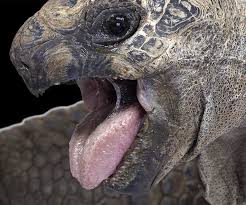
When you think of animals with sharp teeth, predators like sharks, lions, or even domestic cats might come to mind. However, tortoises, known for their slow and gentle demeanor, offer a surprising twist in the conversation about teeth. Interestingly, tortoises do not have teeth at all! Instead, they possess a unique adaptation that serves their dietary needs effectively.
Understanding Tortoise Oral Anatomy
Tortoises belong to the reptilian family, and their diet mainly consists of plant material. Unlike mammals that rely on teeth to cut, grind, and chew their food, tortoises have evolved a different mechanism to handle their herbivorous diet.
Instead of teeth, tortoises have what is called a “beak,” which is similar in function to a bird’s beak. This beak is composed of keratin, the same protein that makes up human fingernails and hair. It covers the tortoise’s jaws, forming a hard, sharp-edged surface that allows them to bite and tear into their food efficiently.
How the Beak Functions
The beak of a tortoise is highly specialized and adapted to their diet. The upper and lower jaws meet in a sharp, scissor-like fashion, allowing the tortoise to slice through tough plant material such as leaves, stems, and fruits. The edges of the beak are often serrated or ridged, which helps in gripping and cutting the food.
Though the beak is not sharp in the same way as a carnivore’s teeth, it is incredibly effective for the tortoise’s needs. The sharpness of the beak can vary among species, depending on their specific diet. For instance, tortoises that primarily feed on harder vegetation like cacti may have a more robust and pointed beak compared to those that eat softer vegetation.
Tortoise Feeding Habits and Beak Maintenance
Tortoises naturally wear down their beaks as they feed, particularly when consuming tougher plant material. This natural wear and tear are essential, as an overgrown beak can lead to feeding difficulties and health problems. In captivity, tortoises may need additional care to ensure their beak remains at an appropriate length, especially if their diet doesn’t provide enough wear.
Can Tortoises Live in Water?
Tortoises are fascinating reptiles known for their slow pace, long lifespan, and distinct shell shapes. However, there is often confusion about whether tortoises can live in water, possibly due to their close resemblance to turtles, which are more aquatic. To clarify, tortoises are terrestrial animals, meaning they live on land and are not equipped to live in water.
Differences Between Tortoises and Turtles
Tortoises and turtles both belong to the order Testudines, but they have evolved to thrive in different environments:
1. Habitat:
- Tortoises: Primarily land-dwelling, tortoises are found in a variety of terrestrial habitats, from deserts to forests. They are not adapted to living in water and require a dry environment to thrive.
- Turtles: In contrast, turtles are more adaptable to aquatic environments. Many species of turtles live in water, including freshwater ponds, rivers, and even the ocean.
2. Physical Adaptations:
- Tortoises: Tortoises have sturdy, domed shells and thick, elephant-like legs that are adapted for walking on land. Their feet are not webbed, and they are not good swimmers. These adaptations make them well-suited for life on solid ground.
- Turtles: Turtles have flatter, streamlined shells and webbed feet or flippers, which aid in swimming. These adaptations are essential for navigating through water efficiently.
Risks of Water for Tortoises
If a tortoise is placed in water, it can face significant dangers:
- Drowning: Tortoises are not good swimmers. If submerged in water, they may struggle to stay afloat and can easily drown.
- Hypothermia: Tortoises are cold-blooded reptiles, and prolonged exposure to water can lead to a drop in body temperature, causing hypothermia.
- Respiratory Issues: If water enters their respiratory system, tortoises can develop infections or pneumonia, which can be fatal.
Is a Tortoise a Turtle?
The terms “tortoise” and “turtle” are often used interchangeably, but they refer to different types of reptiles within the order Testudines. Understanding the distinction between these two can help clarify common misconceptions and provide a deeper appreciation of these fascinating creatures.
Differences Between Tortoises and Turtles
1. Habitat:
- Tortoises: Tortoises are strictly land-dwelling reptiles. They are adapted to live on dry land, often in arid or semi-arid environments. Their legs are sturdy and elephant-like, designed for walking on land rather than swimming.
- Turtles: Turtles, on the other hand, are primarily aquatic or semi-aquatic. They live in water bodies such as oceans, rivers, and ponds. Their limbs are typically webbed or flipper-like, which makes them excellent swimmers.
2. Shell Structure:
- Tortoises: Tortoises have a more dome-shaped shell, which is heavier and sturdier. This design helps protect them from predators on land.
- Turtles: Turtles usually have a flatter, more streamlined shell. This shape reduces water resistance, allowing them to move more efficiently in the water.
3. Diet:
- Tortoises: Tortoises are primarily herbivores, feeding on a diet of grasses, leaves, and fruits. Their beaks are adapted to chew and grind plant material.
- Turtles: Turtles can be herbivores, carnivores, or omnivores, depending on the species. They may eat a variety of foods, including fish, insects, aquatic plants, and algae.
4. Lifespan:
- Tortoises: Tortoises tend to have longer lifespans, with some species living well over 100 years.
- Turtles: Turtles also have long lifespans, especially sea turtles, but they generally do not live as long as tortoises.
5. Behavior and Adaptation:
- Tortoises: Tortoises are generally slower-moving due to their land-based lifestyle. They are adapted to a life of browsing and foraging for food on the ground.
- Turtles: Turtles are more agile, especially in water. Their swimming abilities are crucial for escaping predators, finding food, and migrating.
Can a Tortoise Smell?
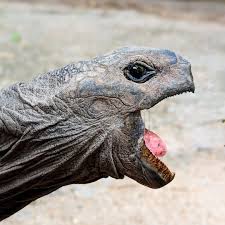
Tortoises are fascinating creatures with unique adaptations that allow them to thrive in various environments. One of the lesser-known aspects of their biology is their ability to smell. While they may not be as well-known for their olfactory capabilities as some other animals, tortoises do possess a sense of smell, which plays a significant role in their survival and daily activities.
The Olfactory System in Tortoises
The sense of smell in tortoises is facilitated by their olfactory system, which includes the nostrils, olfactory epithelium, and olfactory bulbs. The nostrils are located at the front of the tortoise’s head, above the mouth. When a tortoise breathes, air enters through these nostrils, allowing scent molecules to reach the olfactory epithelium.
The olfactory epithelium is a specialized tissue inside the nasal cavity that contains olfactory receptor cells. These cells detect chemical signals (odor molecules) in the environment. Once these signals are detected, they are transmitted to the olfactory bulbs, which are part of the brain. The olfactory bulbs process the information and help the tortoise identify different smells.
How Tortoises Use Their Sense of Smell
Tortoises use their sense of smell for various purposes, including:
- Finding Food: Tortoises rely heavily on their sense of smell to locate food. They can detect the scent of fruits, vegetables, and other plant materials, even when they are hidden or partially buried. This ability is crucial for survival, especially in environments where food sources may be sparse.
- Identifying Mates: During the breeding season, tortoises use their sense of smell to find potential mates. They can detect pheromones, which are chemical signals released by other tortoises. These pheromones provide information about the reproductive status and compatibility of potential mates.
- Navigating Their Environment: Tortoises can use smell to navigate their environment. By recognizing familiar scents, they can find their way back to nesting sites, water sources, or other important locations. This is particularly important for species that live in large, open areas where visual landmarks may be scarce.
- Avoiding Predators: Although tortoises are not known for having a highly developed sense of smell compared to some predators, they can still use it to detect the presence of potential threats. The ability to recognize the scent of a predator can help a tortoise take evasive action or seek shelter.
Do Tortoises Drink Water?
Tortoises, known for their distinctive hard shells and slow movements, are a diverse group of reptiles with varying needs and habits. While many people might think that tortoises, like their turtle relatives, are primarily aquatic, the truth is that most tortoises are terrestrial and have different water needs compared to aquatic turtles.
Drinking Water
Yes, tortoises do drink water. Despite their hardy appearance and ability to survive in arid environments, tortoises need water to stay hydrated and maintain their health. Water is essential for various physiological functions, including digestion, nutrient absorption, and temperature regulation.
Hydration Sources
In the wild, tortoises obtain water from various sources. These include:
- Natural Water Sources: They may drink from rain puddles, streams, or dew on plants.
- Food: Many tortoises eat succulent plants, which can provide a significant amount of water. For example, the prickly pear cactus is a common food source for desert tortoises and is high in moisture.
In captivity, it is crucial to provide a fresh water supply for pet tortoises. This can be done by:
- Water Dish: Providing a shallow dish of water that is easy for the tortoise to access. It should be large enough for the tortoise to soak in, as soaking helps with hydration and can also aid in the shedding process.
- Mist: Occasionally misting the enclosure can help maintain humidity and encourage tortoises to drink more.
Importance of Proper Hydration
Proper hydration is vital for tortoises for several reasons:
- Digestive Health: Water aids in the digestion of food and prevents issues like constipation.
- Skin and Shell Health: Adequate moisture helps keep the tortoise’s skin and shell from becoming too dry or brittle.
- Temperature Regulation: Water helps regulate body temperature, especially in species that live in hotter climates.
Signs of Dehydration
Signs that a tortoise might be dehydrated include:
- Dry, Flaky Skin: The skin may appear dry or flaky, and the tortoise might shed excessively.
- Sunken Eyes: Dehydrated tortoises may have eyes that appear sunken or dull.
- Reduced Activity: A dehydrated tortoise may be less active or lethargic.
Do Tortoises Drink Milk?
Tortoises are reptiles belonging to the family Testudinidae, distinguished from turtles primarily by their land-dwelling habits. They are herbivores, feeding primarily on a variety of plant matter including grasses, leaves, and fruits. Their diet and digestive system have evolved to process plant material efficiently, making milk an unsuitable and unnatural choice for them.
Natural Diet and Digestive System
Tortoises have a specialized digestive system adapted to their herbivorous diet. They possess a large, complex digestive tract that allows them to break down fibrous plant material. Their stomachs and intestines are optimized to extract nutrients from plants, but they lack the necessary enzymes to digest lactose, the sugar found in milk. Lactose intolerance is common in many animals that do not consume dairy products in their natural habitats.
Evolutionary Considerations
Evolutionarily, tortoises have not adapted to consume milk. Their ancestors, like modern tortoises, have lived in environments where milk was not a part of their diet. Their digestive enzymes and gut flora are not designed to handle dairy products. Consuming milk could potentially cause gastrointestinal distress or other health issues, as their bodies are not equipped to process lactose.
Health Implications
Introducing milk into a tortoise’s diet can lead to digestive problems, such as diarrhea or discomfort, due to their inability to digest lactose properly. Additionally, milk does not provide the nutrients tortoises need to thrive. Instead, their diet should be composed of a variety of leafy greens, vegetables, and fruits that provide the necessary vitamins and minerals for their health.
Is It Ok to Touch a Tortoise?
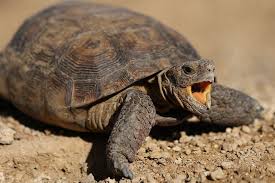
Tortoises are fascinating creatures with unique characteristics that make them intriguing pets. However, handling them requires a bit of understanding to ensure their well-being. Here’s a detailed look at whether and how you should touch a tortoise.
Understanding Tortoises
Tortoises are land-dwelling reptiles known for their protective shells and slow-moving nature. They have a reputation for being calm and relatively low-maintenance pets. However, like all animals, they have specific needs and preferences when it comes to interaction.
Is It Safe to Touch a Tortoise?
1. Stress and Comfort:
- Sensitivity to Stress: Tortoises can experience stress from being handled too frequently or improperly. Unlike more social pets, tortoises are not naturally inclined to interact with humans and may find handling uncomfortable or frightening.
- Signs of Stress: If a tortoise retracts into its shell, becomes aggressive, or exhibits unusual behavior, it may be experiencing stress from being touched or handled.
2. Handling Techniques:
- Gentle Touch: If you need to handle your tortoise, do so gently. Approach slowly and avoid sudden movements that might startle it.
- Supportive Handling: Always support the tortoise’s body fully, especially its legs and shell. This reduces the risk of injury and helps the tortoise feel more secure.
- Avoid the Shell: The shell of a tortoise is a sensitive area. While it is protected by keratin, it’s best not to press on or handle the shell excessively.
3. Health and Hygiene:
- Disease Transmission: Be mindful of hygiene when handling your tortoise. Wash your hands before and after handling to prevent the spread of diseases or parasites.
- Check for Injuries: Regular handling allows you to check for any injuries or signs of health issues. However, this should be done gently and infrequently to avoid stressing the tortoise.
4. Benefits of Limited Interaction:
- Trust Building: Gradual and gentle interaction can help build trust between you and your tortoise. Over time, a tortoise may become more accustomed to your presence.
- Enrichment: Occasionally interacting with your tortoise can provide mental stimulation and enrich its environment, but this should be balanced with its need for solitude and a stress-free habitat.
What Is the Lifespan of a Tortoise?
Tortoises are fascinating creatures renowned for their longevity and resilience. Unlike their aquatic relatives, turtles, tortoises are primarily terrestrial and have adapted to a range of environments, from arid deserts to lush rainforests. Their impressive lifespan is one of the most remarkable features of their biology. Understanding the factors that contribute to their longevity can provide insights into their overall care and conservation.
Lifespan of Tortoises
The lifespan of a tortoise can vary significantly depending on the species. On average, tortoises are known for their long lives, often outliving many other animals, including some humans. Here’s a closer look at the lifespan of various tortoise species:
1. Sulcata Tortoise (African Spurred Tortoise)
- Lifespan: Typically 50 to 70 years in captivity, with some individuals living up to 100 years.
- Factors: Their longevity in captivity is due to stable environmental conditions, proper diet, and veterinary care.
2. Aldabra Giant Tortoise
- Lifespan: Often exceeds 80 years, with some reaching over 100 years.
- Factors: These tortoises benefit from their isolated habitat, which has limited natural predators and provides a stable environment.
3. Galapagos Tortoise
- Lifespan: Can live between 100 to 177 years, with some reports of individuals living over 200 years.
- Factors: Their longevity is attributed to their low metabolic rate, stable diet, and lack of significant predators on the Galápagos Islands.
4. Russian Tortoise
- Lifespan: Generally 40 to 50 years in captivity.
- Factors: Proper care, including a suitable diet and habitat, contributes to their extended lifespan.
5. Box Tortoise
- Lifespan: Typically 50 to 70 years, with some living into their 80s.
- Factors: Box tortoises benefit from careful management in captivity, including appropriate diet and habitat conditions.
Factors Influencing Lifespan
Several factors contribute to the longevity of tortoises:
- Species: Different species have varying lifespans based on their genetic makeup and environmental adaptations.
- Diet: A balanced diet tailored to the specific needs of the tortoise species can significantly impact their health and lifespan. For example, some tortoises require high-fiber diets, while others need a more varied diet.
- Habitat: Proper habitat conditions, including temperature, humidity, and space, are crucial for maintaining the health of tortoises. In captivity, a well-maintained enclosure that mimics their natural environment contributes to their longevity.
- Veterinary Care: Regular health check-ups and prompt medical attention to any health issues can prevent many common ailments that could shorten a tortoise’s life.
- Predators and Threats: In the wild, tortoises face threats from predators and environmental challenges, which can affect their lifespan. Conservation efforts and protected environments can help increase their chances of living longer.
Can Tortoises Feel Pain?
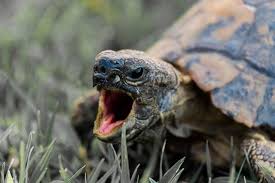
Understanding pain perception in animals is crucial for their welfare, and tortoises are no exception. Tortoises, like many other animals, are capable of feeling pain, though their experience of it might differ from that of humans. This capacity to feel pain is important to consider in their care and management.
Introduction to Tortoise Pain Perception
Pain is a complex and multifaceted experience involving sensory, emotional, and cognitive components. In humans, pain is recognized through a sophisticated interplay between our nervous system, brain, and subjective experience. For animals, including tortoises, pain perception is generally understood through behavioral responses and physiological indicators rather than direct communication.
Anatomy and Physiology
Tortoises possess a nervous system similar in many ways to other reptiles and vertebrates. They have nociceptors, which are specialized nerve endings that respond to harmful stimuli. These nociceptors are found throughout their skin, muscles, and internal organs. When these receptors are activated by potential threats, such as injuries or infections, they send signals to the brain, which can be interpreted as pain.
Behavioral Indicators
Tortoises display various behaviors when they are in pain. These behaviors may include:
- Reduced Activity: A tortoise in pain may become less active or withdraw from normal activities such as foraging or exploring.
- Altered Posture: Pain can cause a tortoise to adopt unusual postures or positions to avoid discomfort, such as curling up or lying in a particular way.
- Changes in Eating Habits: A painful condition may lead to a decrease in appetite or changes in feeding behavior.
- Defensive Behavior: A tortoise might become more aggressive or defensive if it feels threatened or in pain.
Medical Evidence
Studies on reptiles have shown that they have similar physiological responses to pain as other vertebrates. For example, research has demonstrated that reptiles can exhibit stress responses and physiological changes in reaction to pain, such as increased heart rate and changes in blood chemistry.
Implications for Care
Recognizing and managing pain in tortoises is vital for their well-being. Proper care involves:
- Regular Veterinary Check-ups: Routine examinations by a veterinarian can help identify and address any underlying issues that might cause pain.
- Environmental Enrichment: Providing a comfortable and stimulating environment can help minimize stress and discomfort.
- Prompt Attention to Injuries or Illnesses: Addressing health issues promptly can prevent or alleviate pain.
Conclusion
Their beaks are strong and sharp enough to handle a variety of foods, including tough vegetation. The absence of teeth is an adaptation that suits their herbivorous diet. Do tortoise have teeth? Tortoises do not have teeth. Instead, they possess a beak-like structure made of keratin, similar to a bird’s beak, which they use to bite and tear their food.
